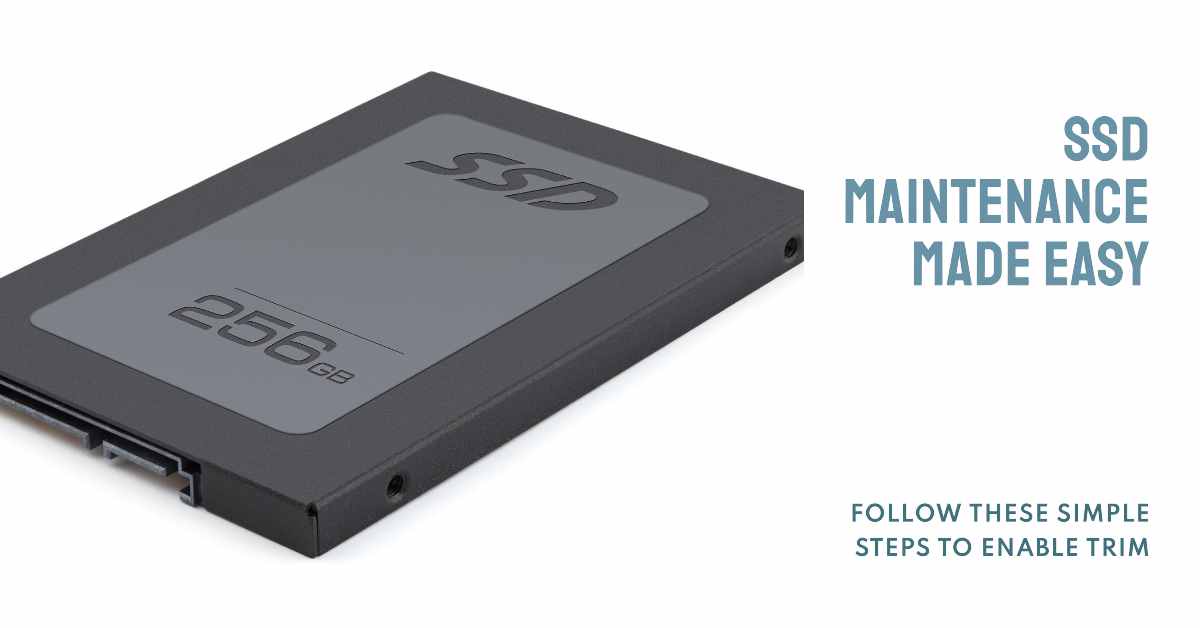Solid State Drives (SSDs) have become increasingly popular due to their speed and reliability compared to traditional hard disk drives. However, to keep your SSD performing at its best, it's essential to enable the TRIM feature. In this guide, we will explore the importance of TRIM in SSD maintenance and provide step-by-step instructions on how to enable it on both Windows and Mac operating systems. We will also address potential issues that may arise and offer troubleshooting solutions to ensure a smooth TRIM activation process.
Understanding the Importance of TRIM in SSD Maintenance
Before we delve into the details of enabling TRIM, let's first explore what TRIM is and why it is essential for maintaining the longevity and performance of your SSD.
SSDs, or Solid State Drives, have become increasingly popular in recent years due to their faster read and write speeds compared to traditional hard drives. However, unlike traditional hard drives, SSDs require a different approach to maintenance to ensure optimal performance over time. This is where TRIM comes into play.
What is TRIM and Why is it Essential?
TRIM is a command that allows the operating system to inform your SSD that blocks of data are no longer in use and can be erased. When you delete files on a traditional hard drive, the operating system marks the space as available for future use. However, on an SSD, the process is different.
Without TRIM, the SSD may still consider the deleted data as in use, leading to degraded performance over time. This is because SSDs use a technology called NAND flash memory, which stores data in blocks. When you delete a file, the SSD marks the corresponding block as invalid, but it doesn't immediately erase the data. Instead, it waits for an idle period to perform a process called garbage collection, where it consolidates valid data and erases the invalid blocks.
However, if TRIM is enabled, the operating system can inform the SSD in real time which blocks are no longer in use. This allows the SSD to immediately erase those blocks, making them available for new data. By doing so, TRIM helps maintain the SSD's performance and prevents performance degradation over time.
The Role of TRIM in Prolonging SSD Life
Enabling TRIM ensures that your SSD's performance remains consistent throughout its lifespan. By promptly erasing no longer needed data, TRIM helps optimize the utilization of available storage and maintains the SSD's efficiency. When TRIM is enabled, the SSD can quickly identify and erase invalid blocks, reducing the need for garbage collection and improving overall performance. This proactive approach to data management not only improves performance but also extends the overall life expectancy of your SSD.
Additionally, by minimizing the number of write operations required for garbage collection, TRIM helps reduce wear and tear on the SSD's memory cells. This can significantly prolong the lifespan of the SSD, making it a valuable feature for those who want to maximize the longevity of their storage device.
Moreover, it's important to consider the hardware aspects of SSD performance. Understanding your SSD's PCIe speed chart is crucial for optimizing its capabilities. In conclusion, TRIM is a crucial feature for maintaining the performance and longevity of your SSD. By enabling TRIM, you can ensure that your SSD operates at its full potential throughout its lifespan, providing you with faster read and write speeds and a longer-lasting storage solution.
Preparing Your System for TRIM Activation
Before enabling TRIM, it's crucial to verify whether your SSD and operating system support this feature.
Checking Your SSD's Compatibility with TRIM
To determine if your SSD supports TRIM, check the manufacturer's specifications or visit their website for detailed information. Most modern SSDs, particularly those released in the past few years, have built-in TRIM support. However, it's always a good idea to double-check to ensure compatibility.
Necessary System Requirements for Enabling TRIM
In addition to SSD support, your operating system also needs to have TRIM capabilities. Windows 7 and newer versions, as well as Mac OS X 10.7 Lion and later, have native TRIM support. Ensure that you are running a compatible operating system before proceeding.
Step-by-Step Guide to Enabling TRIM on Windows
If you're using a Windows operating system and have confirmed TRIM support on your SSD, follow these steps to enable TRIM:
Accessing the Command Prompt
Click on the Start menu and type "Command Prompt" in the search bar. Right-click on the Command Prompt application and select "Run as administrator" to open an elevated Command Prompt window.
Running the TRIM Command
Once the Command Prompt is open, type "fsutil behavior set DisableDeleteNotify 0" and hit Enter. This command will enable TRIM for all compatible SSDs connected to your system.
Enabling TRIM on Mac OS
Mac OS X users can also enable TRIM for their SSDs using the Terminal application:
Using Terminal to Enable TRIM
Launch Terminal from the Applications folder or by searching for it in Spotlight. Once Terminal is open, enter the command "sudo trimforce enable" and press Enter. You will be prompted to enter your administrator password.
Verifying TRIM Activation on Mac
After entering your password, Terminal will display a warning about potential data loss and prompt you to confirm your decision. Type "yes" and hit Enter. Your Mac will then restart, and TRIM will be enabled on your SSD.
Potential Issues and Troubleshooting
While enabling TRIM is generally a straightforward process, you may encounter some common issues. Here are a few problems you might encounter and their corresponding solutions:
Common Problems When Enabling TRIM
One common issue is an incompatible SSD firmware version. Ensure that your SSD's firmware is up to date by visiting the manufacturer's website and downloading any available firmware updates. Additionally, some third-party disk encryption software may interfere with TRIM functionality. Consider temporarily disabling these applications before enabling TRIM.
Effective Solutions for TRIM-Related Issues
If you experience slow performance after enabling TRIM, try optimizing your SSD with a utility provided by your SSD manufacturer. These utilities can help enhance performance by performing tasks such as garbage collection and firmware optimization.
By enabling TRIM on your SSD, you can ensure optimal performance and prolong its lifespan. Follow the step-by-step instructions provided for your specific operating system to enable TRIM and overcome any potential issues that may arise. With TRIM activated, you can enjoy the full benefits of your SSD's speed and reliability for years to come.


No comments yet